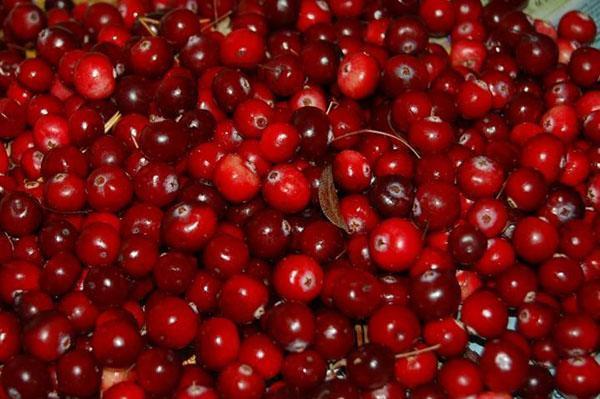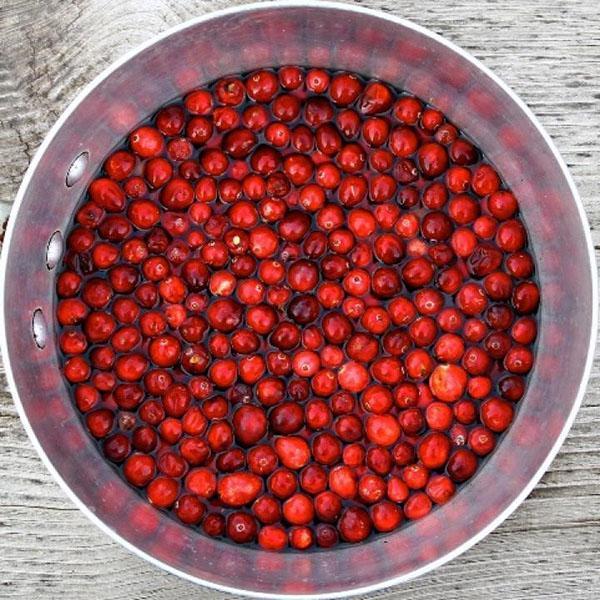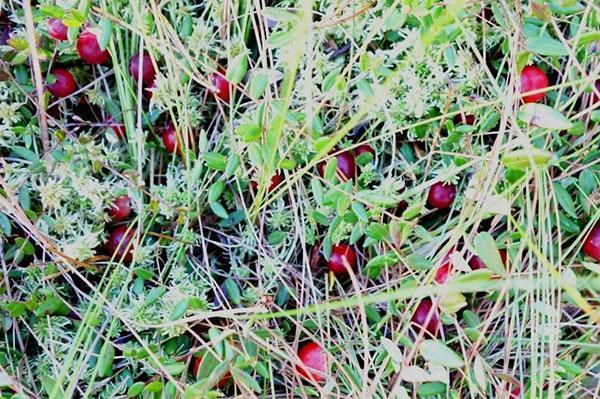About the benefits of cranberries
 Among the few indigenous North American fruits that are grown commercially, cranberries are considered the real star of the fall season. It is harvested from late September to October, and fresh berries harvested during this period can be eaten until Christmas. Summer residents often harvest several bags of cranberries, then place them in plastic containers, freeze them and eat them all winter.
Among the few indigenous North American fruits that are grown commercially, cranberries are considered the real star of the fall season. It is harvested from late September to October, and fresh berries harvested during this period can be eaten until Christmas. Summer residents often harvest several bags of cranberries, then place them in plastic containers, freeze them and eat them all winter.
Only 15% of the cranberry crop is sold as fresh berries. The rest is converted into juices, sauces and other similar foods.
Cranberry traditions

 The product was used by both Native Americans and Europeans on long hikes in winter forests. Due to its nutritional value and low weight, pemmican is in demand among tourists to this day.
The product was used by both Native Americans and Europeans on long hikes in winter forests. Due to its nutritional value and low weight, pemmican is in demand among tourists to this day.
Why cranberries are considered a superfood
 You've probably read that cranberries are positioned as the healthiest berry. While fresh fruits are a good source of fiber and a modest source of vitamin C and minerals, cranberries are superfoods due to their abundance of phyto-compounds. These are the chemicals the plant produces for its own defense: anti-inflammatory, antibacterial, and antioxidant compounds.
You've probably read that cranberries are positioned as the healthiest berry. While fresh fruits are a good source of fiber and a modest source of vitamin C and minerals, cranberries are superfoods due to their abundance of phyto-compounds. These are the chemicals the plant produces for its own defense: anti-inflammatory, antibacterial, and antioxidant compounds.
 Many women use cranberry powder supplements to prevent recurrence of urinary tract infections (UTIs).
Many women use cranberry powder supplements to prevent recurrence of urinary tract infections (UTIs).
Research has shown that one of the berry's unique phyto compounds, proanthocyanidin, prevents bacteria from adhering to the walls of the urinary tract, thereby preventing infection and reinfection in people at risk.
The same hypothesis claims that cranberry foods can help prevent ulcers by preventing disease-causing bacteria from growing on the lining of the stomach. However, the researchers warn that while cranberries boost immunity and prevent infections, they cannot cure disease. So if you suspect you have a UTI or stomach pain, see your doctor.
Today, the potential of cranberries has begun to be explored for use in the prevention and treatment of heart disease, various forms of cancer, gastrointestinal disorders and viral diseases. It should be borne in mind that you need to consult a specialist before you start using berries for medicinal purposes. This is because cranberries can react with the medications you are taking.
Cooking tips
 Considering that cranberries are very acidic, most juices and processed foods with berries require a lot of sweeteners. Homemade recipes are no exception. Try stewing fresh cranberries with pears, apples, chopped dates, or dried apricots. If the taste is still too sour, add some sweetener.
Considering that cranberries are very acidic, most juices and processed foods with berries require a lot of sweeteners. Homemade recipes are no exception. Try stewing fresh cranberries with pears, apples, chopped dates, or dried apricots. If the taste is still too sour, add some sweetener.
Beets and cranberries, a root vegetable and fruit of the fall season, go well in soups, sauces, condiments and chutney (Indian seasoning). The recipe for one of these dishes:
- 2 cups fresh cranberries
- 2 large beets, cooked, peeled and chopped;
- ⅔ cup thawed frozen apple juice concentrate, salted to taste.
Bring the cranberries and apple juice to a boil. Cook over low heat until the berries burst. Then add finely chopped beets and salt.

Alternatively, simmer 2 chopped apples or pears in a bowl of apple cider until tender. Add the cranberries and continue until the berries burst. Then stir in the beets and salt. If the dish is not sweet enough, add 1-2 scoops of your favorite sweetener.
Now you know how valuable and useful cranberries can be. With proper care, this wild crop can be grown in your country house. If you manage to create all the conditions for the normal growth of this berry, you will be able to provide yourself with a source of a unique product for a long time, which has an extremely positive effect on the human body.